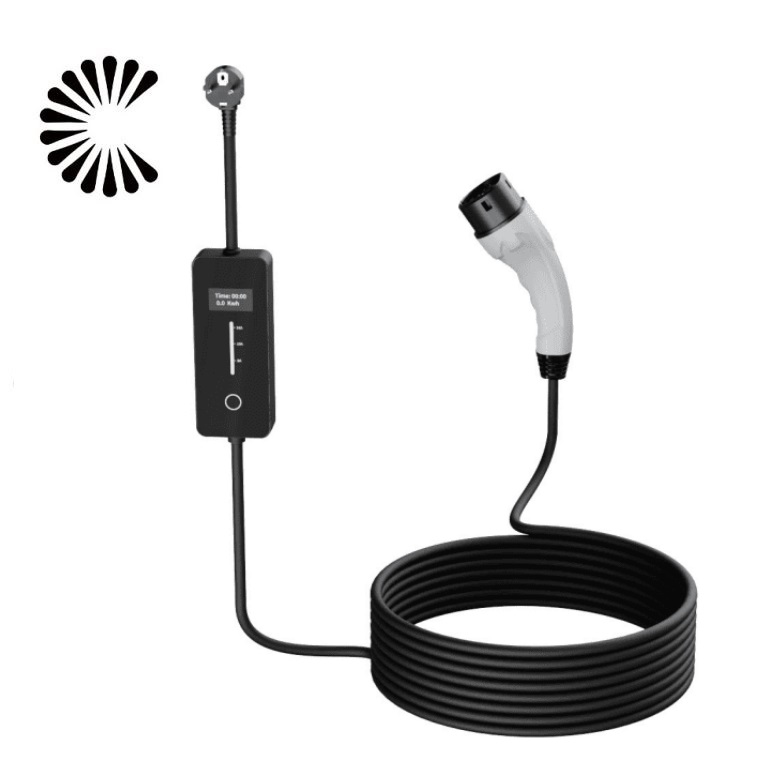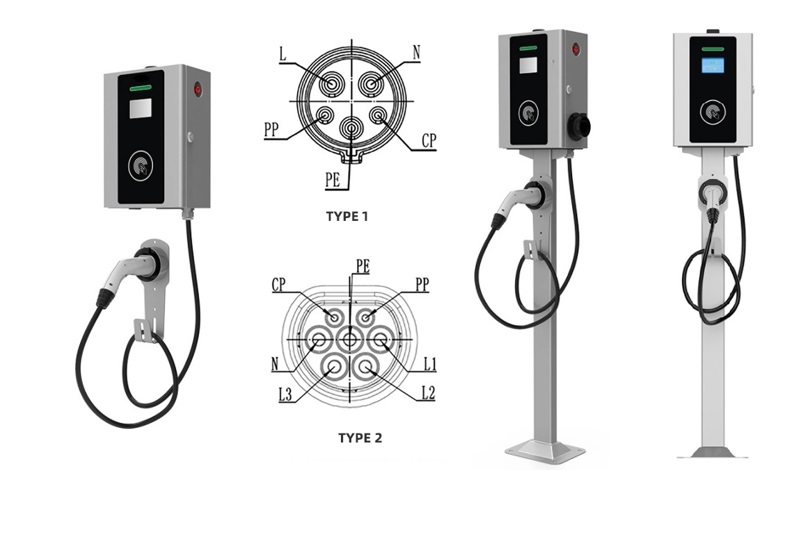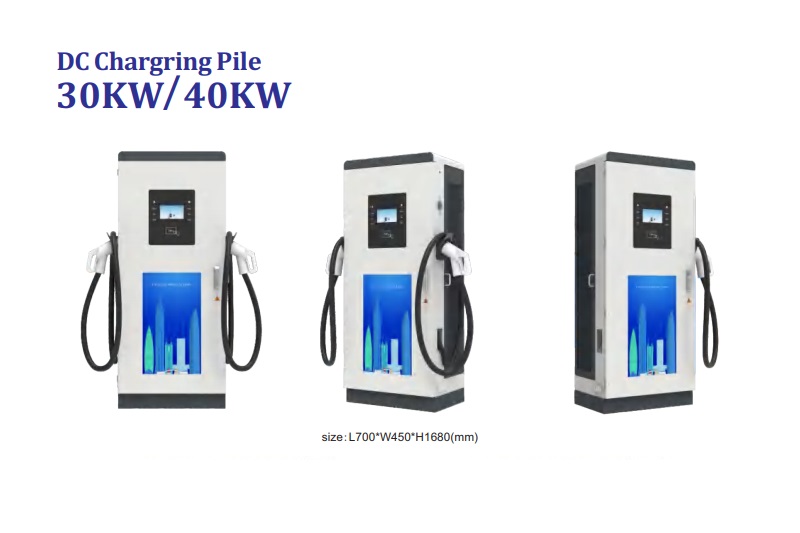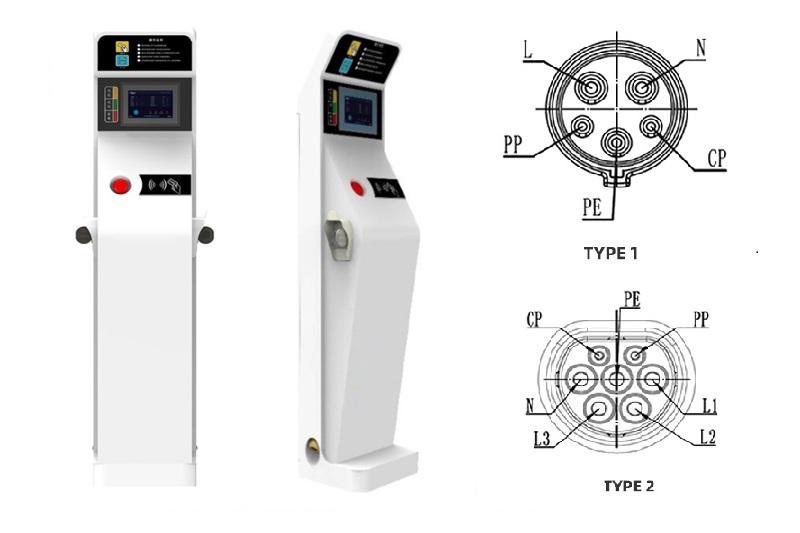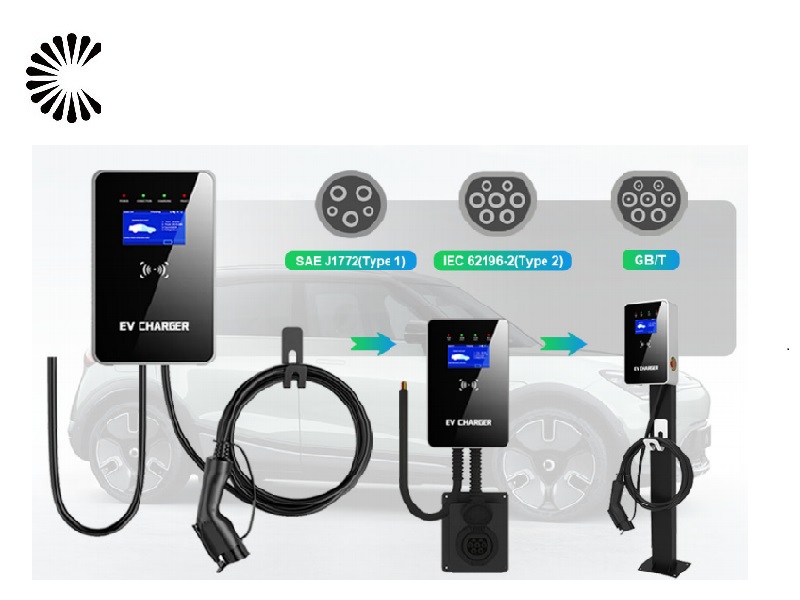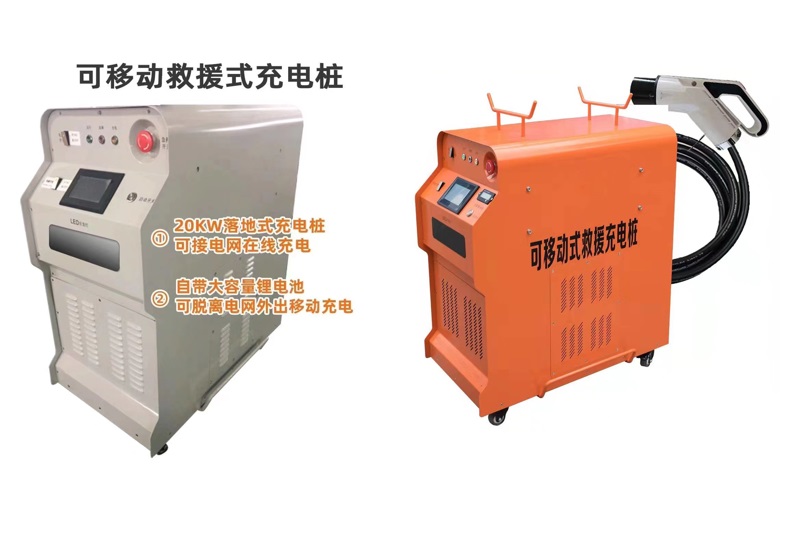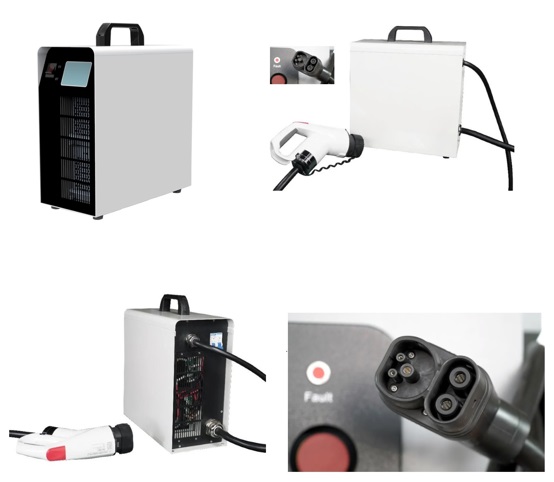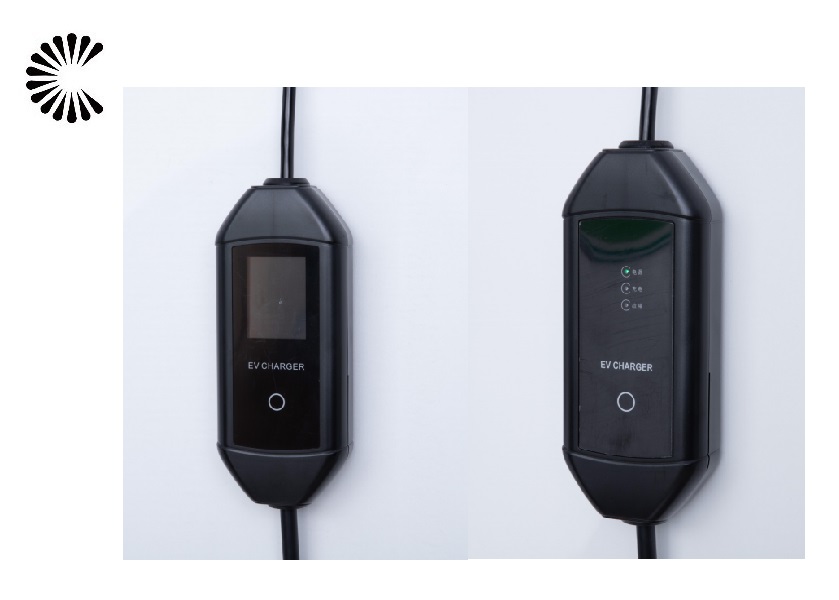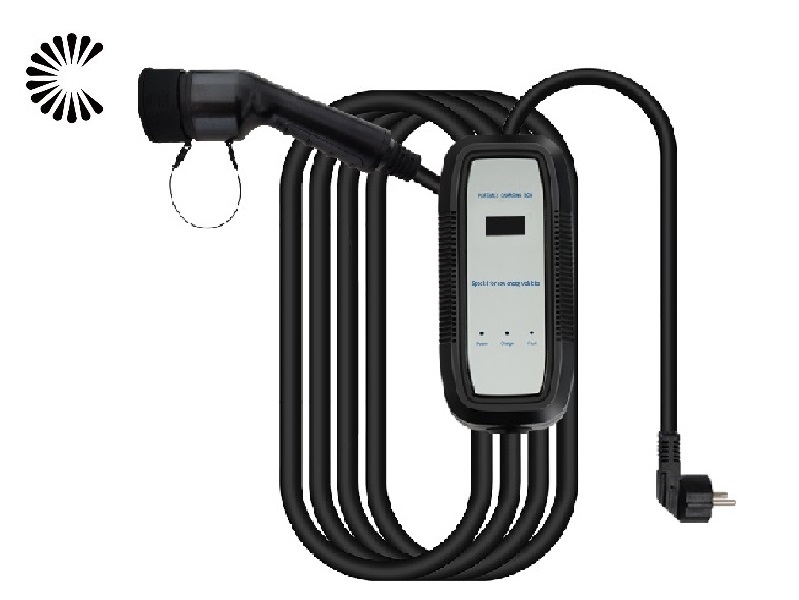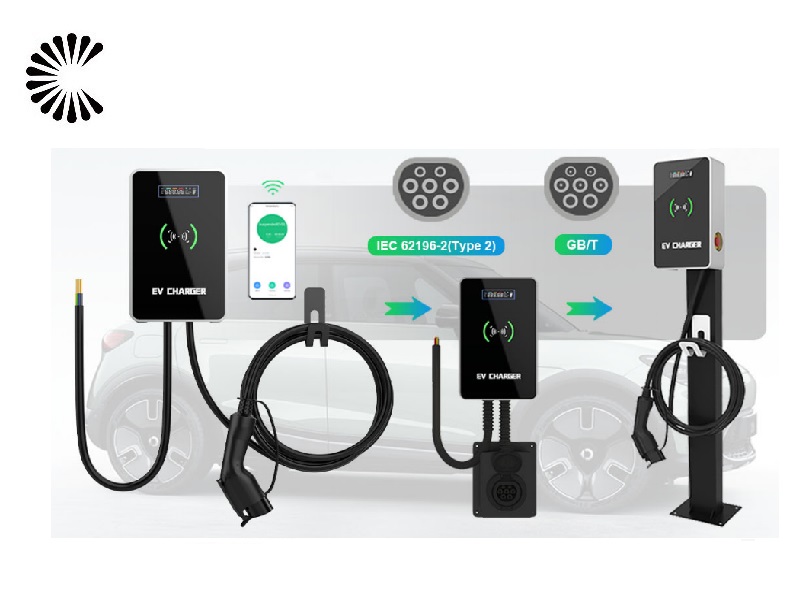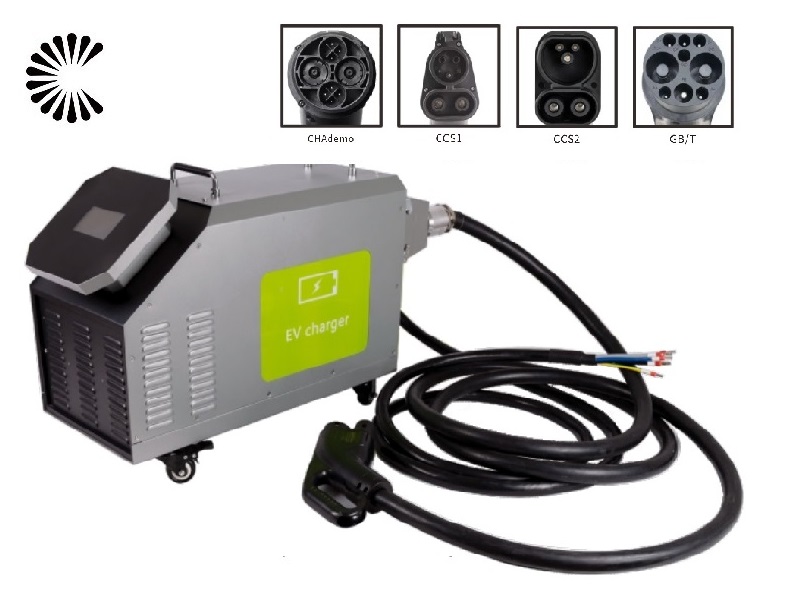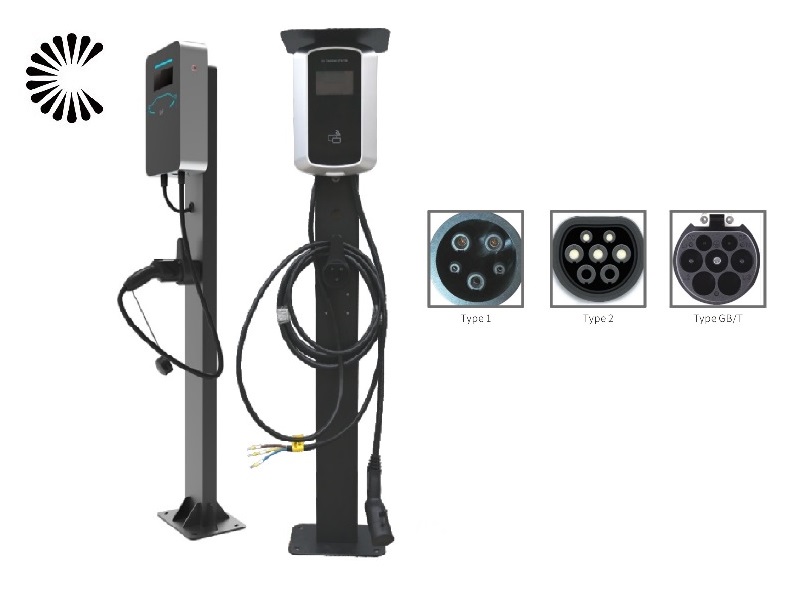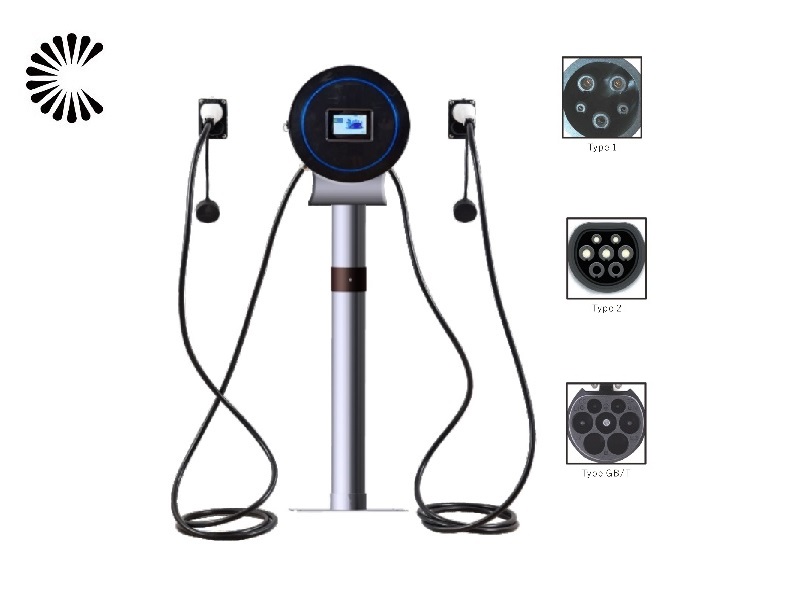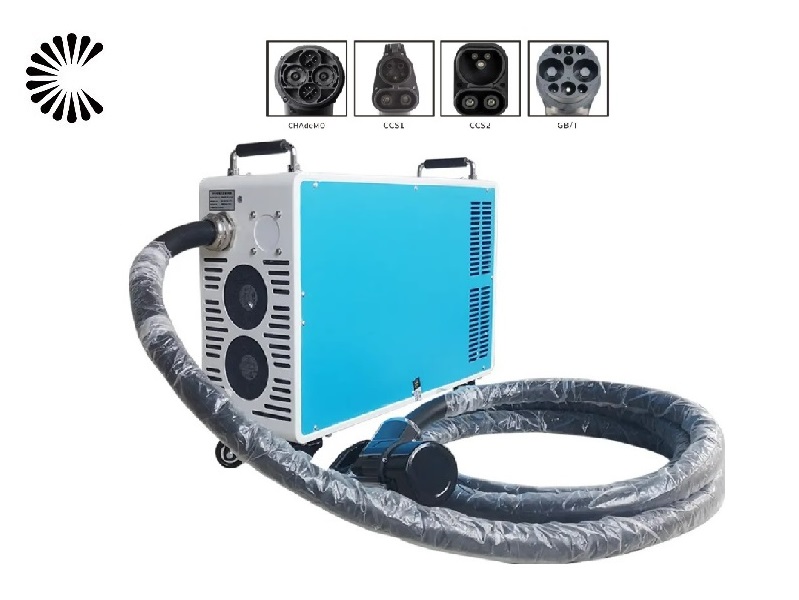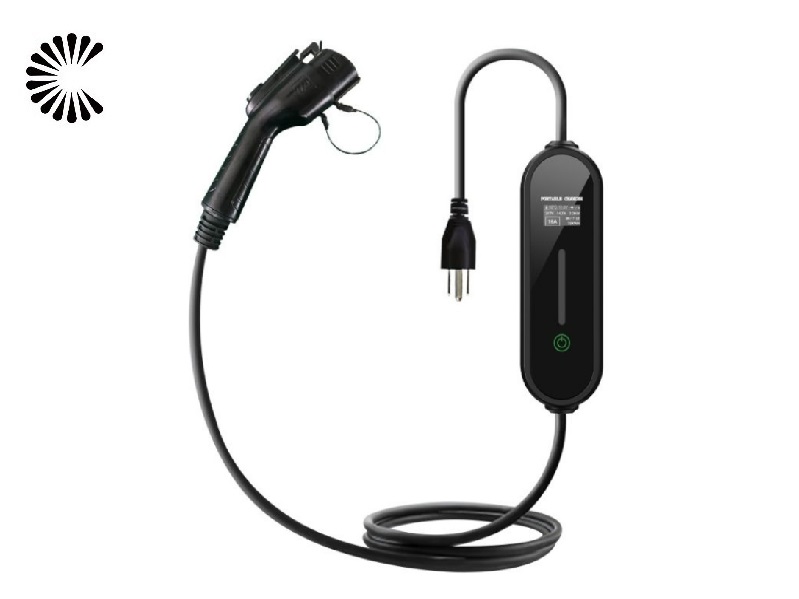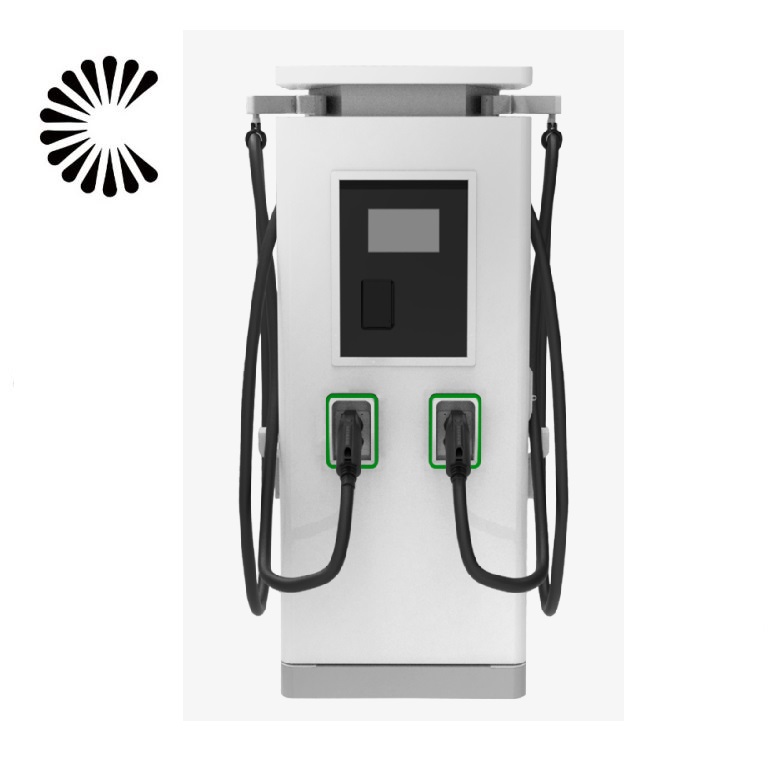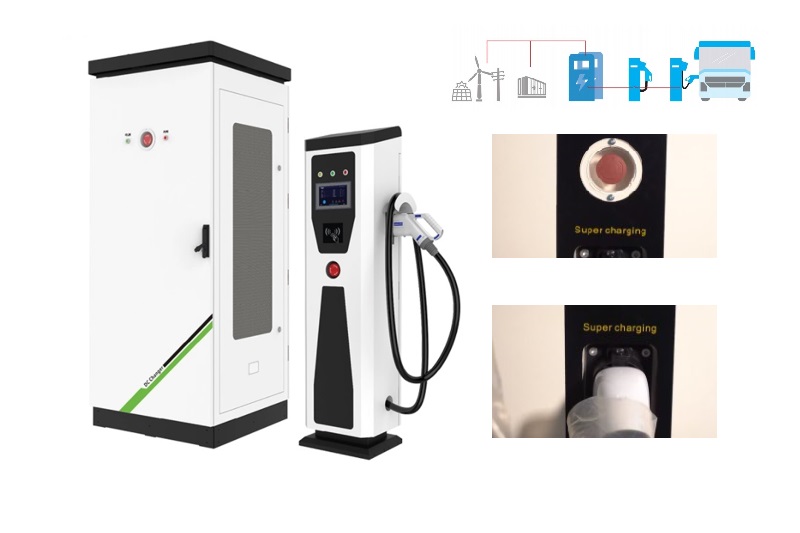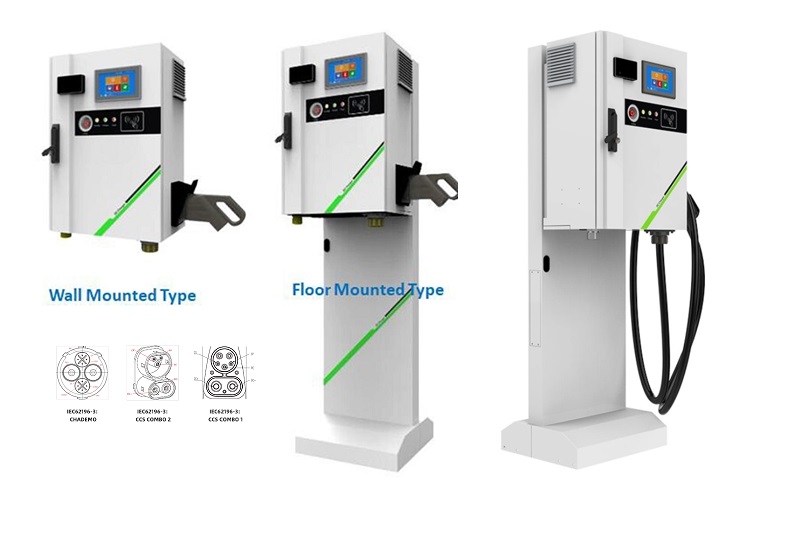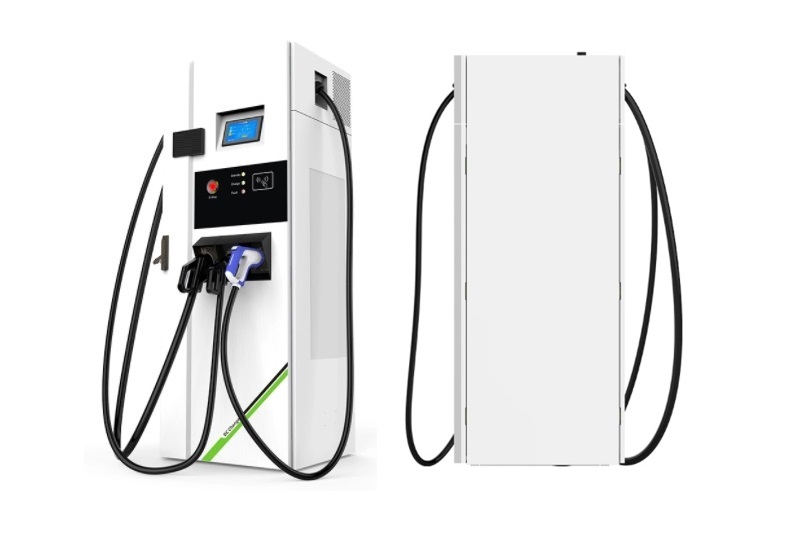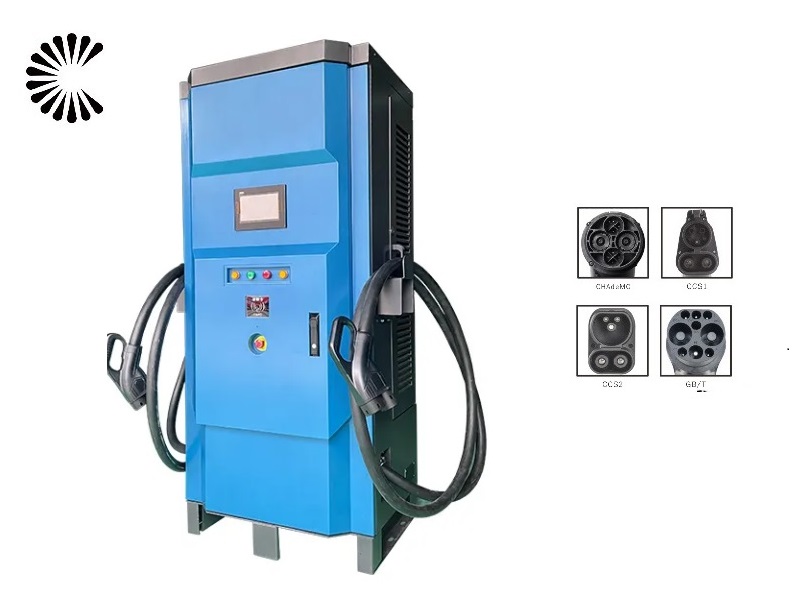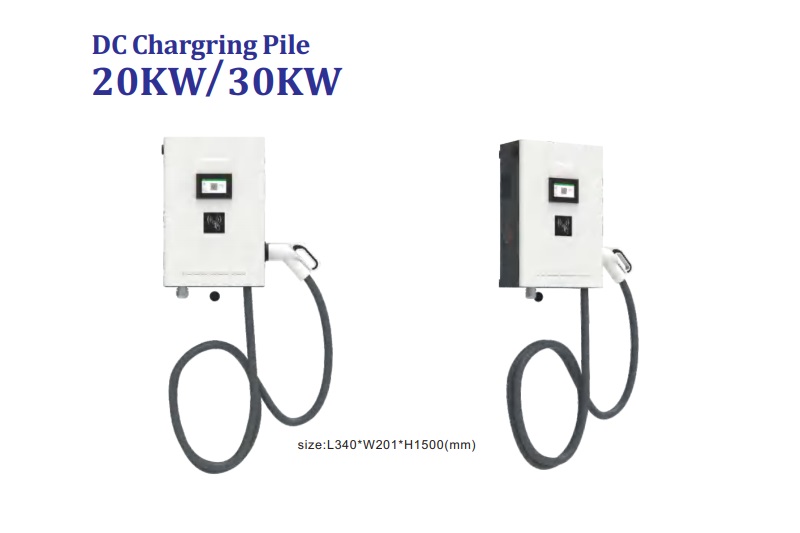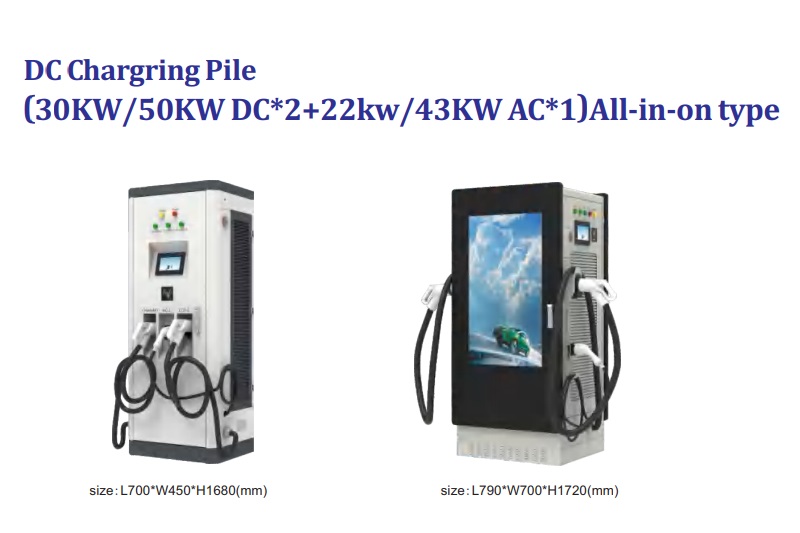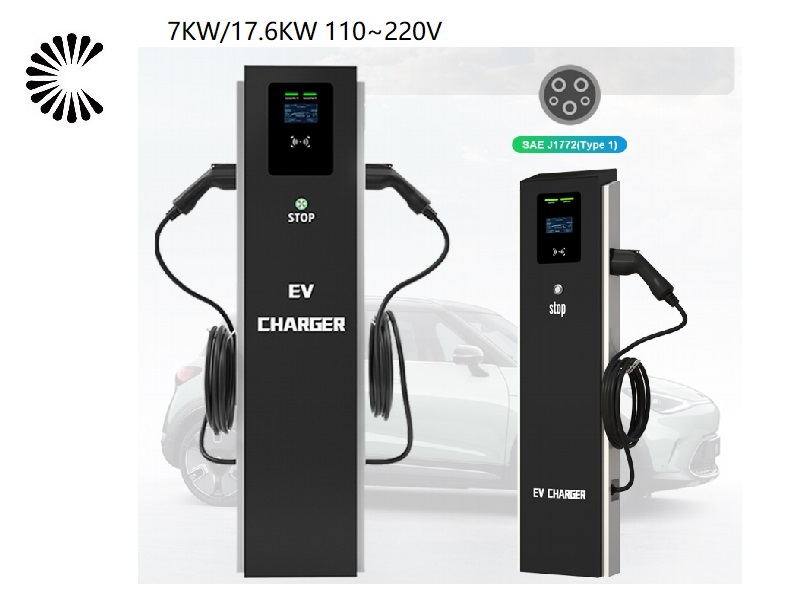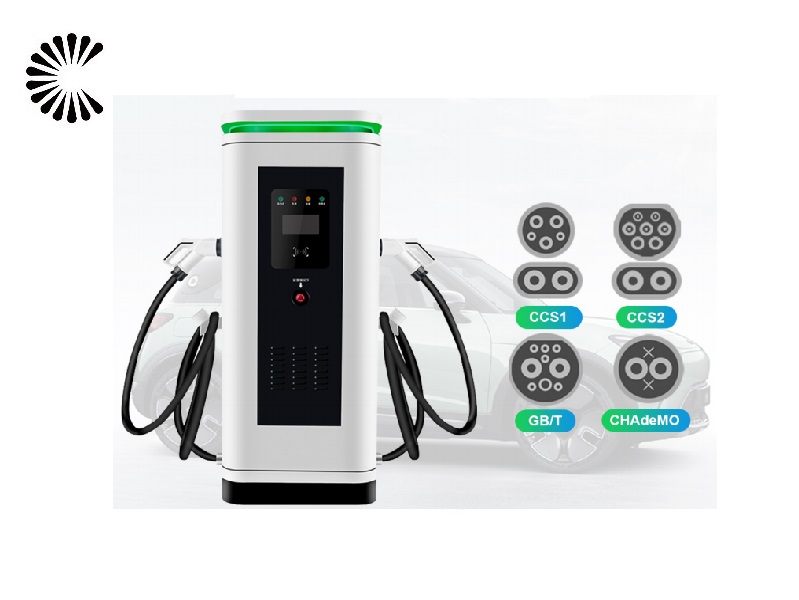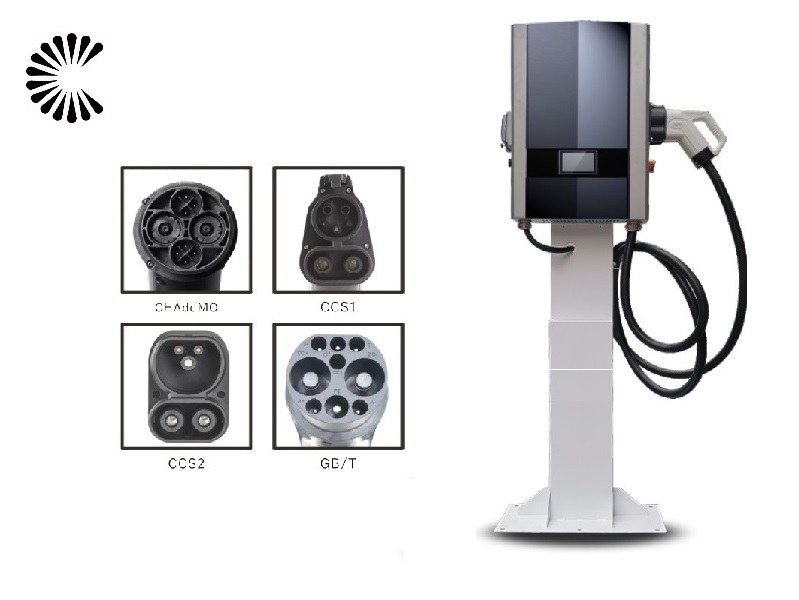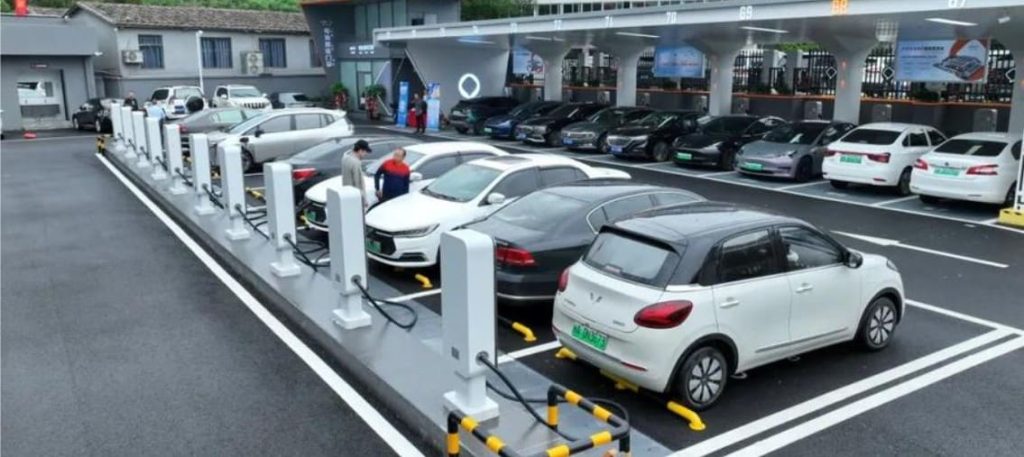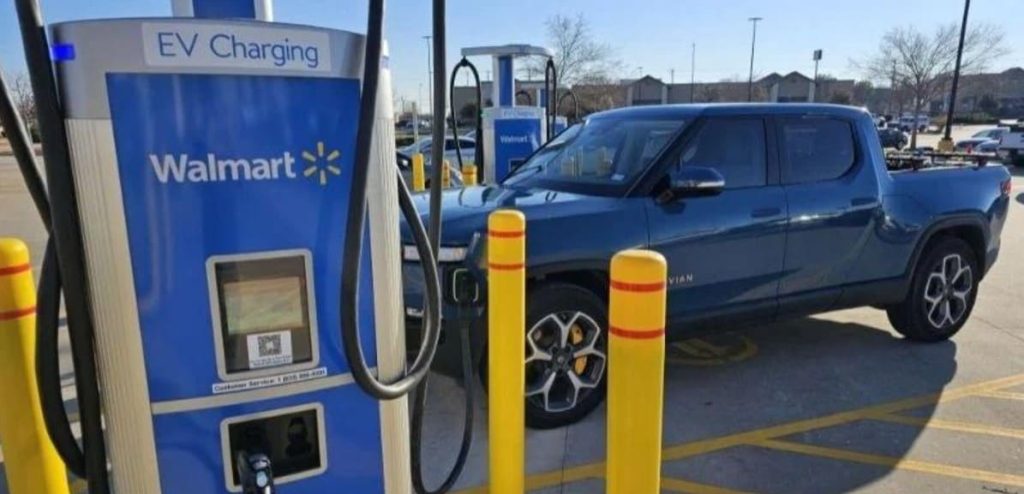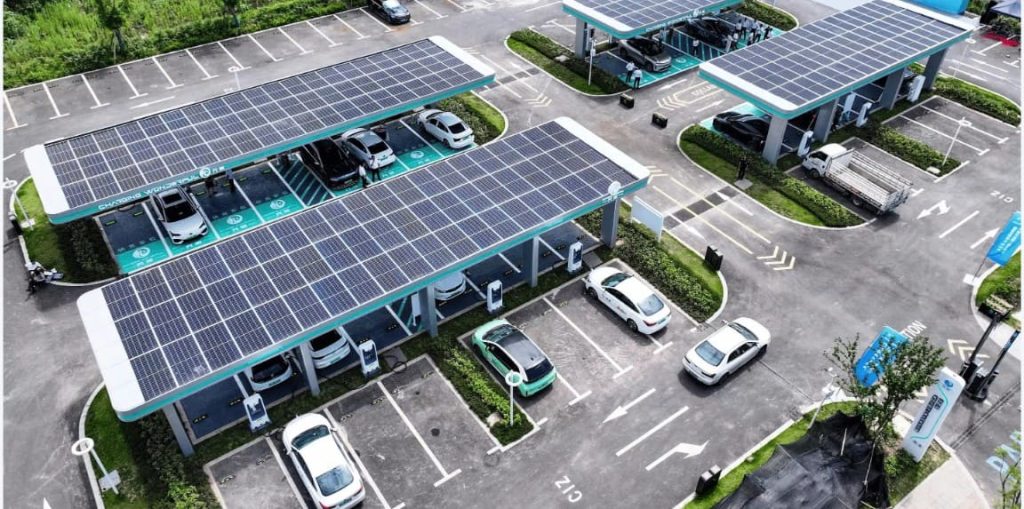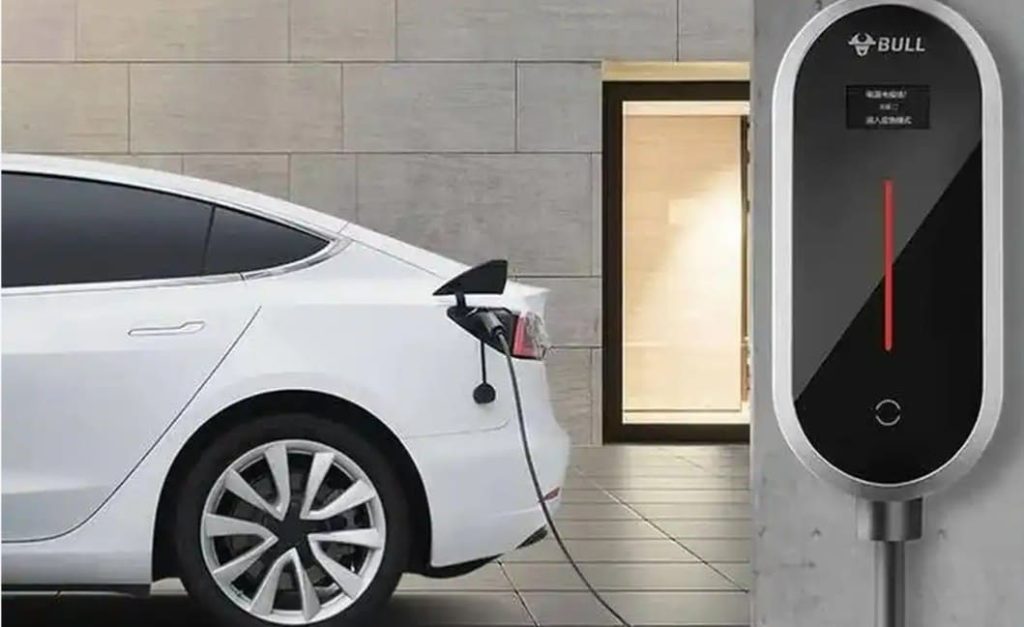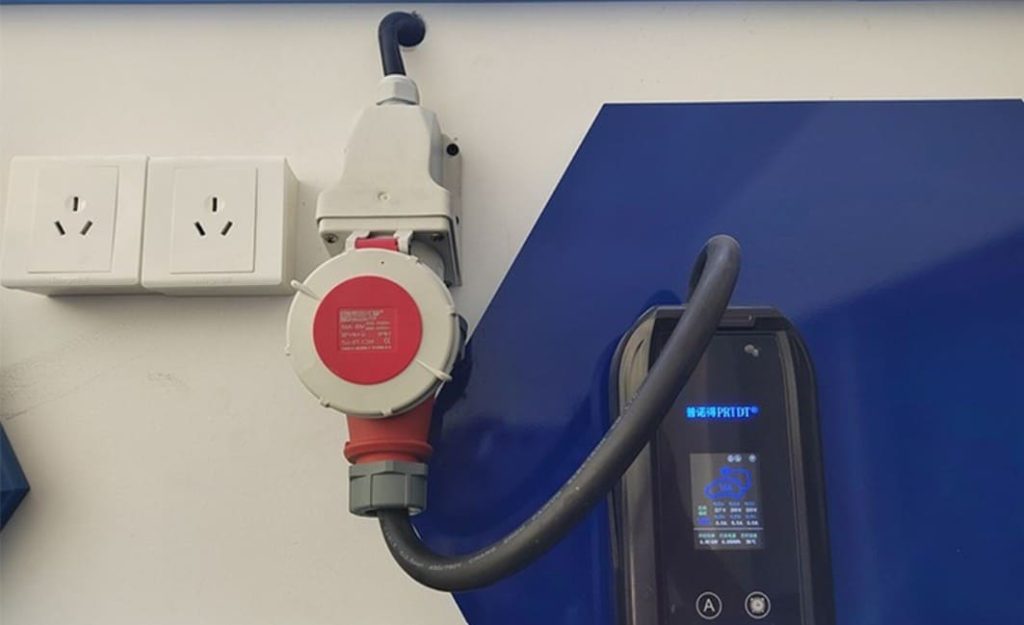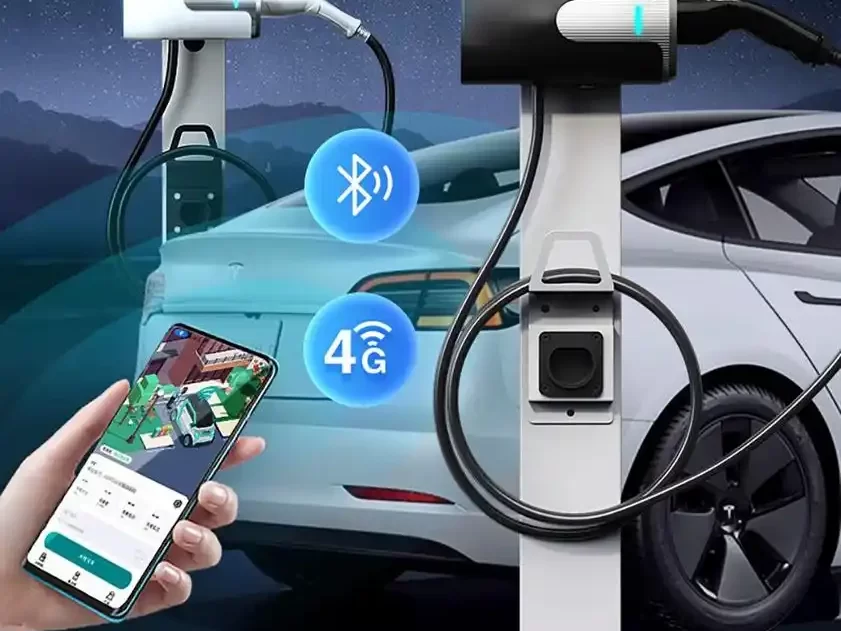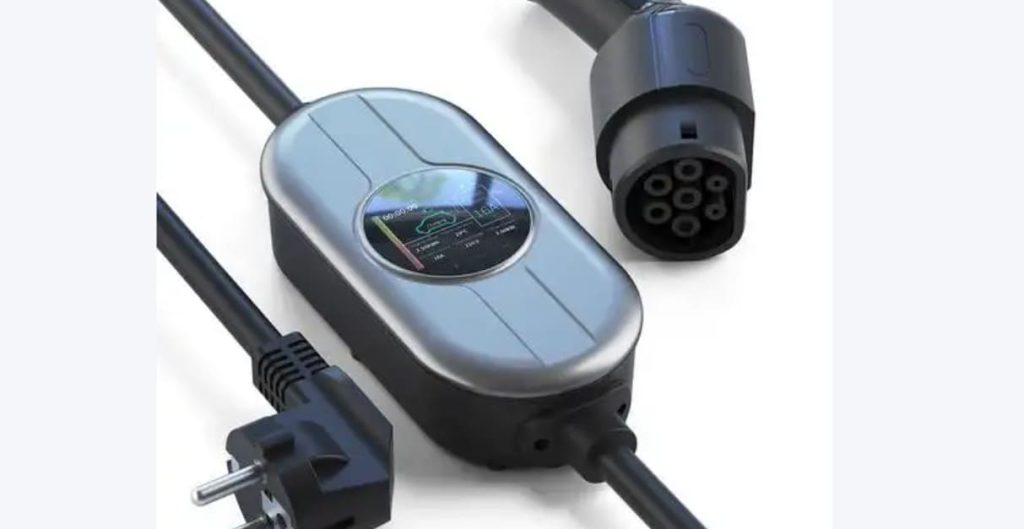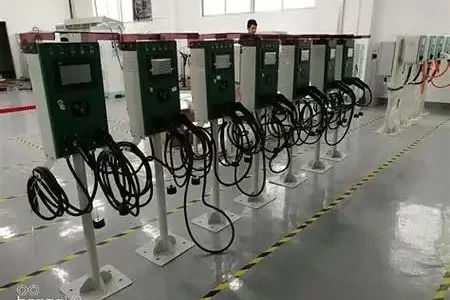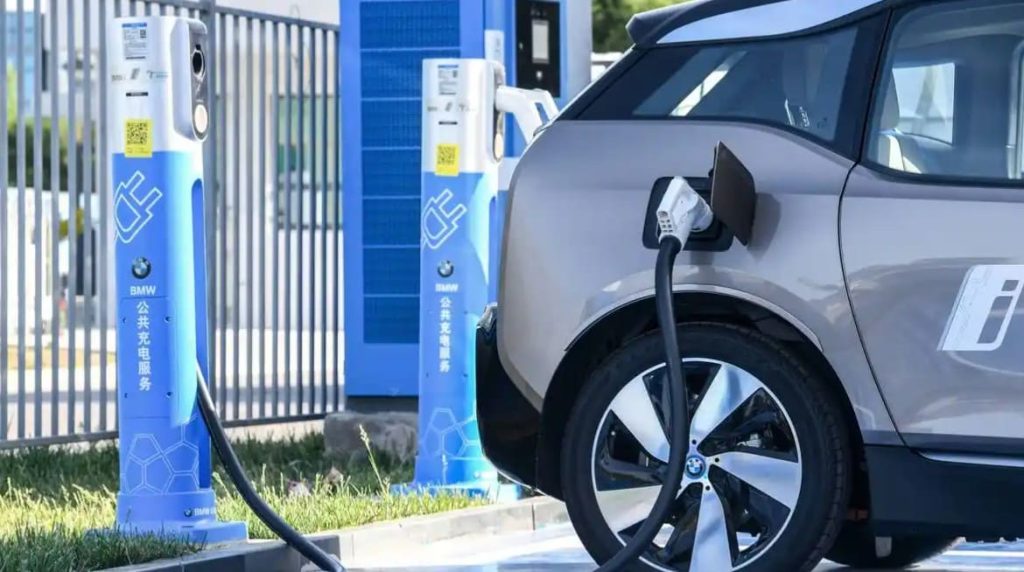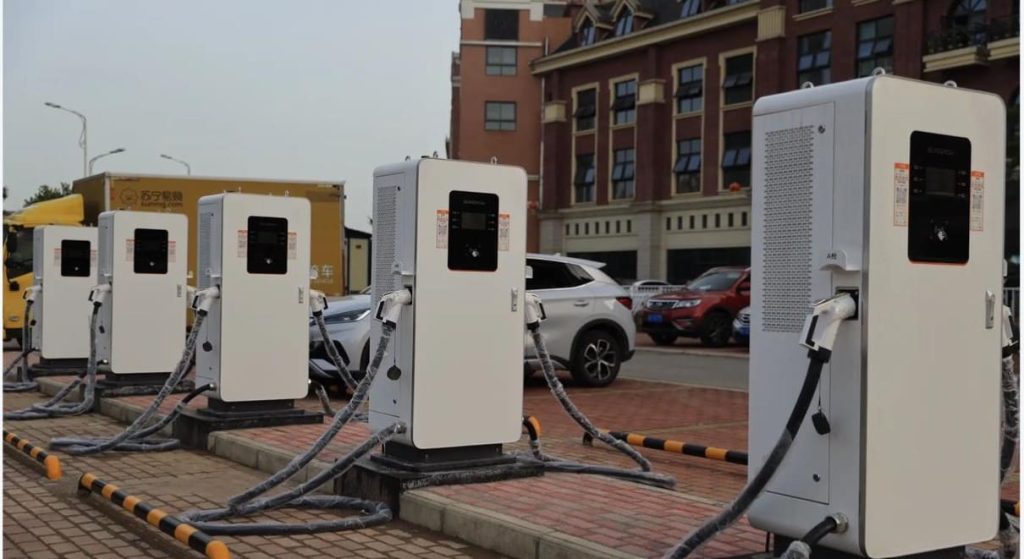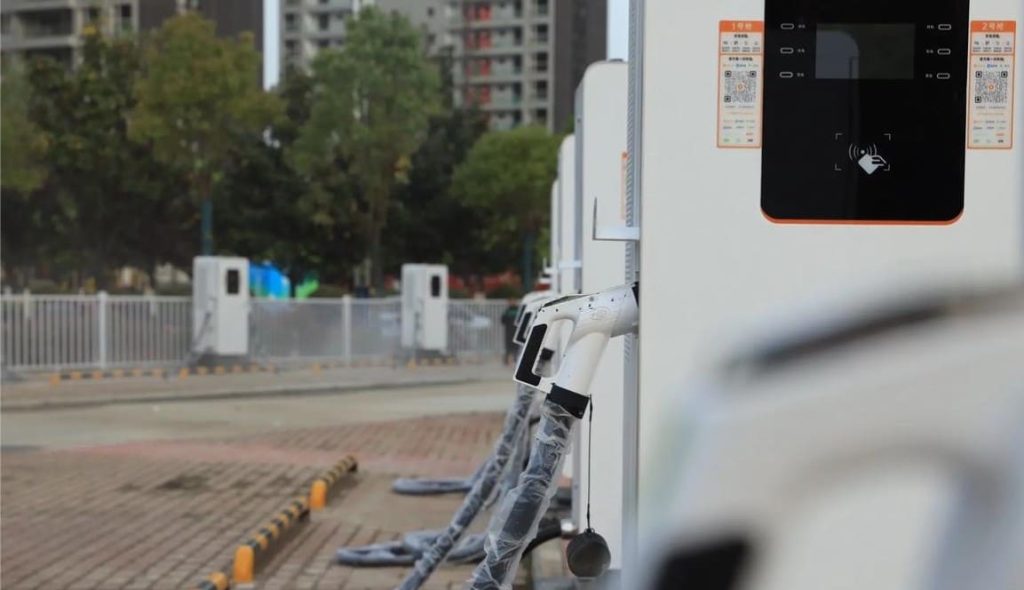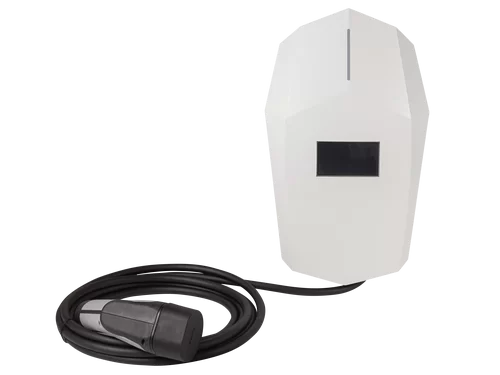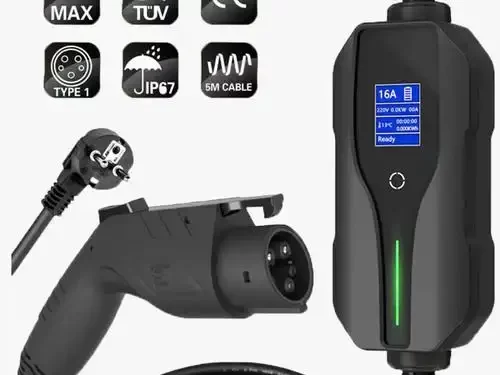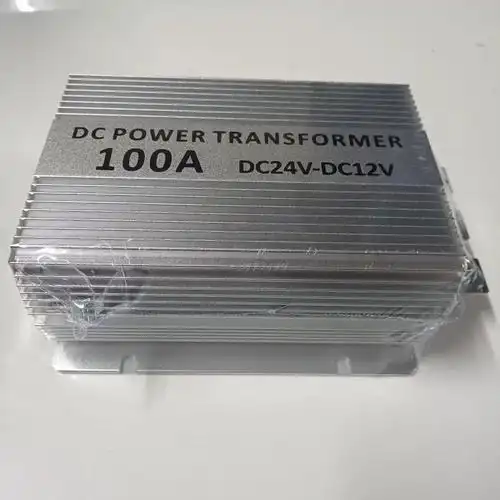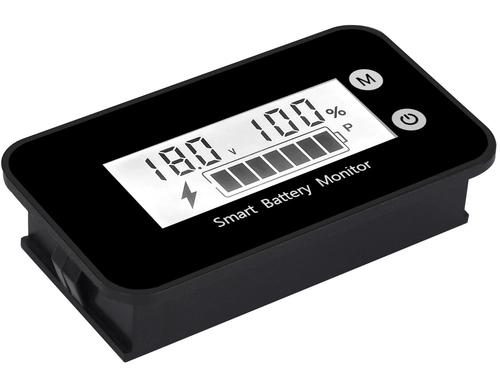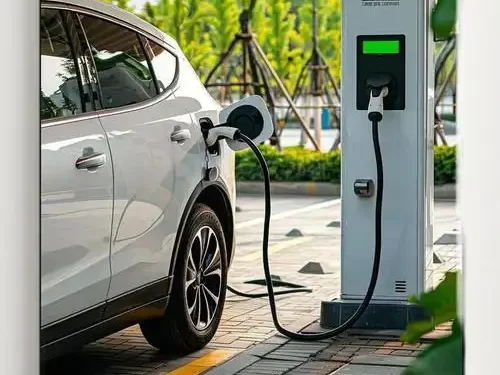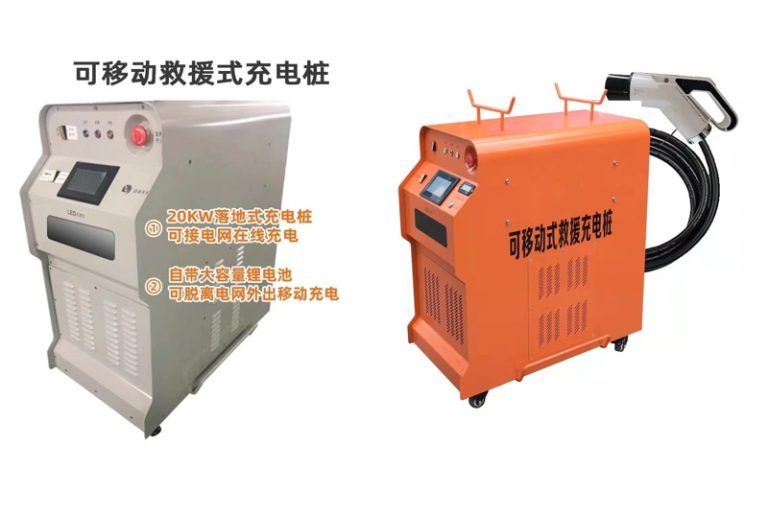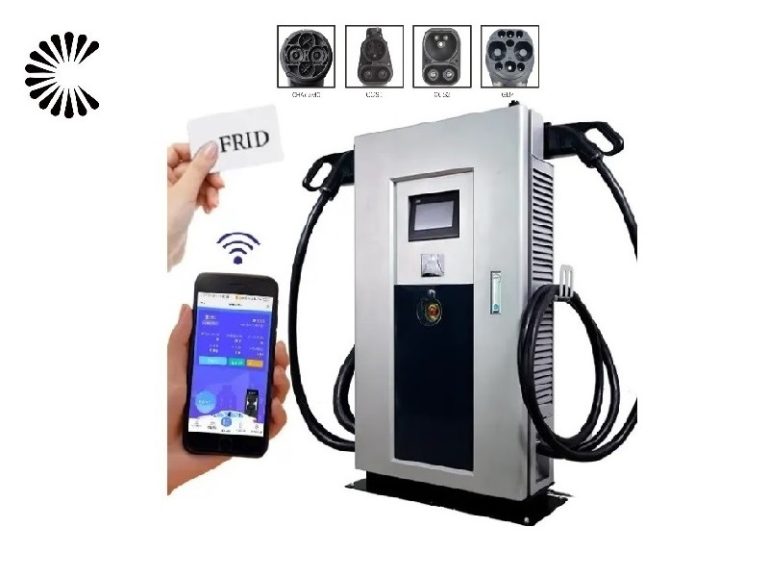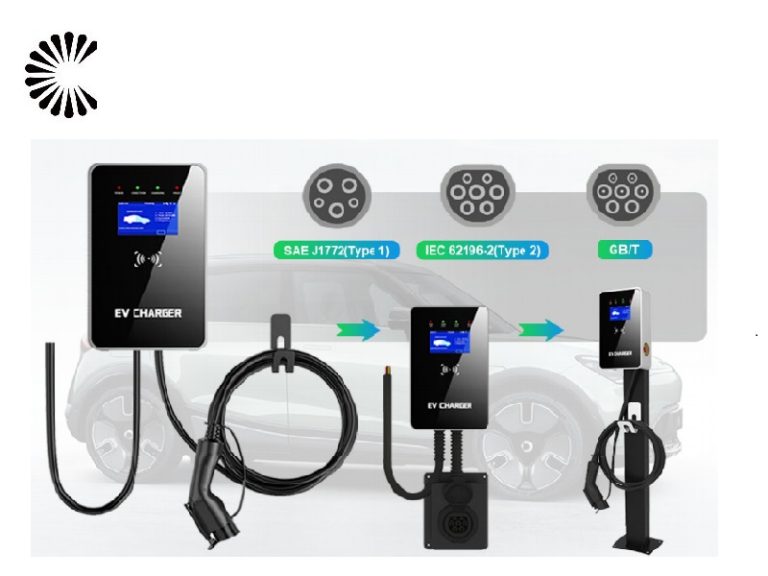EV Charger Level 1
EV Chargers Level 1 Product for Sale (Click to Get the Price List):
EV Chargers Level 2 Product for Sale (Click to Get the Price List):
Introduction of EV Charger Level 1:
What is a Level 1 EV charger?
A EV Charger Level 1, in simple terms, is a basic and slow electric vehicle (EV) charger that you can use at home or any standard electrical outlet. It is the most basic charging option available for EV owners.
When you plug your electric vehicle into a EV Charger Level 1, it typically uses a standard household 120-volt AC outlet, just like the ones you have at home for your regular electronic devices. This makes it very convenient because you don’t need any special charging infrastructure or modifications to your electrical system.
However, the drawback of a EV Charger Level 1 is that it delivers a relatively low charging rate, which means it takes a long time to fully charge your EV’s battery. Depending on the battery size and the state of charge, it might take several hours or even overnight to reach a full charge. As a result, Level 1 chargers are best suited for people who have a lot of time available to charge their EV, like overnight charging at home or during extended periods of inactivity.
In summary, a EV Charger Level 1 is a simple and slow charging option that can be used with a standard household outlet, making it accessible to most EV owners, but it requires patience due to its slow charging speed.
Is it better to charge an EV with a Level 1?
Charging an EV with a Level 1 charger has both advantages and disadvantages, and whether it is better or not depends on your specific needs and circumstances.
Advantages of EV Charger Level 1:
- Accessibility: Level 1 chargers can be used with a standard household 120-volt outlet, making them widely available and convenient for most EV owners.
- Cost-Effective: Since no special charging infrastructure is required, the initial setup cost is minimal.
- No Installation Needed: You don’t need to install any additional charging equipment, which is beneficial for renters or those who don’t have easy access to a dedicated charging station.
Disadvantages of EV Charger Level 1:
- Slow Charging Speed: Level 1 chargers provide a relatively low charging rate, leading to longer charging times. If you have a large battery or frequently use your EV, the slow charging speed might not be sufficient to meet your daily needs.
- Limited Range: Slower charging might not allow you to fully replenish your EV’s battery between daily trips, limiting your driving range.
So, whether Level 1 charging is better for you depends on how you plan to use your EV. If you have a relatively small battery, don’t drive long distances regularly, and have enough time for overnight charging at home, Level 1 charging could be sufficient. On the other hand, if you have a larger battery or need to charge quickly for frequent long trips, a faster Level 2 charger or DC fast charger at public charging stations might be more suitable.
In general, Level 1 charging is most appropriate for people who have low daily driving needs and the convenience of overnight charging, while others with higher demands might benefit from faster charging options.
What are Level 1 and Level 2 EV chargers?
Level 1 and Level 2 EV chargers are two types of electric vehicle (EV) charging stations that differ in terms of charging speed and the voltage they use.
- Level 1 EV Charger: A Level 1 EV charger is the most basic and slowest charging option available for electric vehicles. It uses a standard household 120-volt AC outlet, which means you can plug it into a regular electrical socket you have at home. This makes it very convenient because it doesn’t require any special charging infrastructure or modifications to your electrical system. However, due to the lower voltage and current, Level 1 chargers have a relatively slow charging speed.
Advantages:
- Easy to set up and widely accessible.
- Cost-effective as no additional charging equipment is needed.
- Suitable for overnight charging at home.
Disadvantages:
- Slow charging speed leads to longer charging times.
- May not be sufficient for EVs with larger batteries or high daily driving needs.
- Level 2 EV Charger: A Level 2 EV charger is a faster charging option compared to Level 1. It requires a 240-volt electrical circuit, which is typically installed by an electrician at your home or at public charging stations. Level 2 chargers provide higher power output, resulting in faster charging times for your electric vehicle.
Advantages:
- Faster charging compared to EV Charger Level 1, reducing charging times significantly.
- Suitable for EVs with larger batteries or people who have higher daily driving demands.
- Can be installed at home or available at public charging stations.
Disadvantages:
- Higher installation cost compared to Level 1 due to the need for a dedicated 240-volt circuit.
- Might not be as widely accessible as Level 1 chargers, especially in certain locations.
In summary, Level 1 EV chargers are basic and slow chargers that use a standard household outlet, while Level 2 EV chargers are faster and require a dedicated 240-volt circuit. The choice between the two depends on your charging needs, the range of your EV, and how quickly you want to recharge your vehicle.
What is the difference between Level 1 and Level 2 chargers?
The main difference between EV Charger Level 1 and Level 2 chargers lies in their charging speed and the voltage they use.
- Charging Speed: Level 1 Charger: Level 1 chargers have a slower charging speed compared to Level 2 chargers. They typically provide power at a rate of around 2 to 5 miles of range per hour of charging. For example, if your electric vehicle has a range of 100 miles, it might take approximately 20-50 hours to fully charge from empty to full using a Level 1 charger.
Level 2 Charger: Level 2 chargers offer a faster charging speed than Level 1. They provide power at a rate of around 10 to 25 miles of range per hour of charging. Using the same example, an EV with a 100-mile range could be fully charged in approximately 4-10 hours with a Level 2 charger.
- Voltage and Electrical Circuit: EV Charger Level 1 use a standard household 120-volt AC outlet, similar to the ones used for regular household appliances. This makes them easily accessible, as they can be plugged into any standard outlet without the need for additional electrical infrastructure.
Level 2 Charger: Level 2 chargers require a higher voltage level and use a 240-volt AC power supply. To install a Level 2 charger, you need a dedicated 240-volt circuit, which typically requires the expertise of an electrician. These chargers are commonly found in public charging stations, commercial areas, and increasingly installed in homes for faster charging.
In summary, the key differences between EV Charger Level 1 and Level 2 EV chargers are their charging speed and the electrical voltage they use. EV Charger Level 1 are slower, using a standard 120-volt outlet, while Level 2 chargers are faster and require a dedicated 240-volt circuit. The choice between the two depends on your charging needs, the range of your electric vehicle, and how quickly you want to recharge it.
Related Products
Related Articles
Why Choose Us?
Our EV Charger Factory Introduction:
| Business Type: | Manufacturer/Factory | Main Products: | EV Charger |
| Number of Employees: | 100 | Year of Establishment: | 2014.05 |
| Production Capacity | 5000Set/Year | After-sales Service: | Technical Support; on-line teach lessons |
| R&D Capacity: | ODM, OEM | Annual Output Value: | US$5 Million – US$10 Million |
| No. of R&D Staff: | 5 | No. of Production Lines: | 6 |
ChargersGO Factory is a professional manufacturer for EV Charger. Our main product including slow charger, fast charger, DC EV Charger, AC EV Charger, commercial EV Charger, charger for home, EV charger level 1, level 2 and level 3 etc. All products in accordance with the China GMP design requirements. And also we have other certifications.
Business Philosophy
“Quality is the main policy of sales” and “integrity is the principle of success” are the business philosophy of our people. We carry out one-year warranty, lifelong maintenance service, with technical consultation and other services, and long-term supply of equipment. Welcome new and old customers to negotiate cooperation!
Production Process:
Producing an Electric Vehicle (EV) charger involves a series of carefully orchestrated steps to ensure the charger’s quality, safety, and performance. The production process typically consists of the following key stages:
- Design and Engineering: The process begins with the design and engineering phase. Skilled engineers and designers work together to create a blueprint for the EV charger. They consider factors like power capacity, safety features, charging protocols, and compatibility with various electric vehicle models.
- Component Sourcing: Once the design is finalized, the production team sources the necessary components and materials for the charger. These components can include circuit boards, connectors, casing materials, power modules, and safety components. Manufacturers often prioritize high-quality, reliable components to ensure the charger’s longevity and performance.
- Circuit Board Assembly: The core of an EV charger is its circuit board, which controls the charging process and ensures safe operation. Surface Mount Technology (SMT) machines precisely place electronic components onto the circuit board. Skilled technicians may also perform manual assembly for certain components that require extra care.
- Casing and Enclosure: The charger’s casing is an essential part of its design, providing protection from external elements and ensuring user safety. The casing is usually made of durable materials, such as aluminum or robust plastics. Injection molding or other manufacturing techniques are used to create the charger’s enclosure.
- Quality Control: Throughout the production process, rigorous quality control checks are conducted to identify any defects or inconsistencies. Each charger is tested at various stages to ensure its functionality and safety compliance. Quality control specialists meticulously examine the assembled units to meet industry standards.
- Safety Testing and Certifications: Before releasing the chargers to the market, they undergo rigorous safety testing and certifications. These tests may include electrical safety tests, thermal tests, and environmental tests to ensure the charger can operate reliably in different conditions.
- Final Assembly and Packaging: After successfully passing all tests and certifications, the chargers undergo final assembly and packaging. They are carefully packaged and prepared for distribution, along with user manuals and any necessary accessories.
- Distribution and Installation: The chargers are then distributed to retailers, charging network operators, or directly to end customers. Upon receiving the chargers, they are installed at charging stations or provided to electric vehicle owners for home charging.
- Customer Support and Maintenance: Once in use, manufacturers provide ongoing customer support and maintenance services to ensure the chargers continue to perform optimally. This includes troubleshooting assistance, firmware updates, and periodic inspections.
By following a well-structured production process and adhering to strict quality standards, manufacturers can produce high-quality EV chargers that contribute to the growth of electric mobility and a greener, sustainable future.

Certifications:
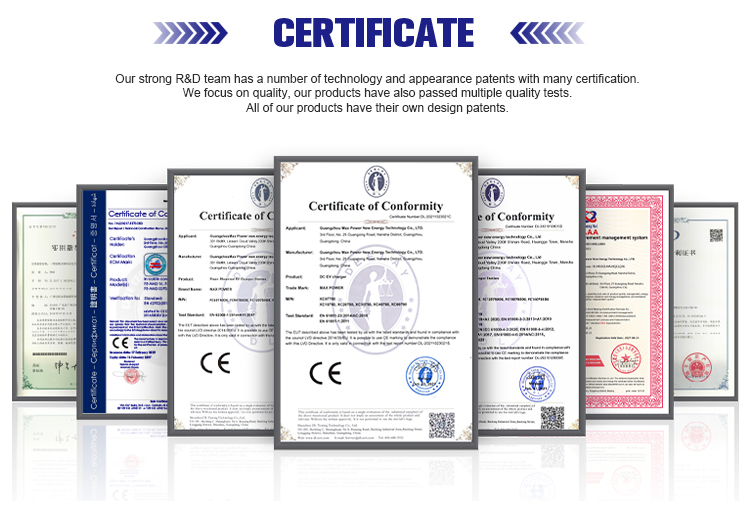
Small EV Charger Packing:
Retail Small EV Charger shipped with express.
Wsholesale Small EV Charger packed with export fumigation-free wooden cases, goes with bulk shipment or in container.
When packing small EV charger for sea shipment, it is important to take measures to ensure that the machines are protected from damage during transit. Here are some general steps that a manufacturer may follow when packing small EV charger for sea shipment:
- Clean and dry the charger: Before packing, the charger should be thoroughly cleaned and dried to prevent any moisture or debris from causing damage during transit.
- Disassemble the machine: If possible, the charger should be disassembled into its component parts to reduce its overall size and make it easier to pack.
- Wrap the charger in protective material: The charger should be wrapped in a layer of protective material, such as bubble wrap or foam, to protect it from scratches and impact during transit.
- Place the charger in a sturdy box: The wrapped charger should then be placed in a sturdy box that is appropriate for the size and weight of the machine. The box should be made of durable material, such as corrugated cardboard or plywood, and should be able to withstand the rigors of sea transit.
- Add packing material: The box should be filled with packing material, such as packing peanuts or air pillows, to provide cushioning and prevent the machine from shifting during transit.
- Seal the box: The box should be securely sealed with high-quality packing tape to prevent it from opening during transit.
- Label the box: The box should be clearly labeled with the charger’s name, weight, and any other relevant information, as well as the destination address and contact information.
Overall, the goal is to pack the small chargers in a way that will protect it from damage during transit and ensure that it arrives at its destination in good condition. It is important to follow proper packing procedures and use high-quality packing materials to minimize the risk of damage during sea shipment.
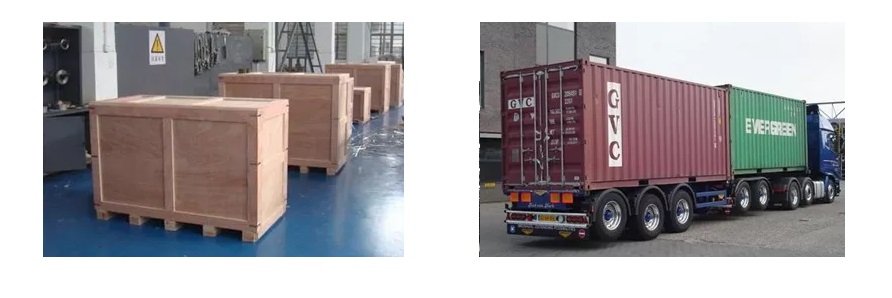
Large EV Charger Packing:
Packing a large EV charger for sea shipment can be a complex and challenging task. However, with careful planning and attention to detail, it is possible to pack a large machine for sea shipment in a way that will ensure that it arrives at its destination in good condition. Here are some general steps that a manufacturer may follow when packing up a large machine for sea shipment:
- Clean and prepare the machine: Before packing, the EV charger should be thoroughly cleaned and prepared. All fluids, such as oil or coolant, should be drained, and any loose or detachable parts should be removed.
- Disassemble the machine: If possible, the machine should be disassembled into its component parts to reduce its overall size and make it easier to pack. Each part should be carefully labeled and numbered to ensure that it can be easily reassembled at the destination.
- Protect delicate parts: Delicate or fragile parts should be wrapped in protective material, such as bubble wrap or foam, to protect them from damage during transit.
- Build a custom crate: A custom crate should be built around the machine to provide a secure and sturdy enclosure. The crate should be made of durable material, such as plywood, and should be designed to fit the machine snugly. The crate should also include braces or supports to prevent the machine from shifting during transit.
- Add cushioning material: The crate should be filled with cushioning material, such as packing peanuts or air pillows, to provide extra protection and prevent the machine from moving or shifting during transit.
- Securely fasten the machine: The EV charger should be securely fastened to the crate to prevent it from moving or shifting during transit. This may involve using straps, bolts, or other fasteners to hold the machine in place.
- Seal and label the crate: The crate should be securely sealed with high-quality packing tape, and should be clearly labeled with the machine’s name, weight, and any other relevant information. The destination address and contact information should also be clearly marked on the crate.
Overall, packing a large EV charger for sea shipment requires careful planning and attention to detail. It is important to use high-quality materials and follow proper packing procedures to ensure that the EV charger arrives at its destination in good condition. A professional packing and shipping company may be consulted to ensure that the machine is properly packed and prepared for sea shipment.
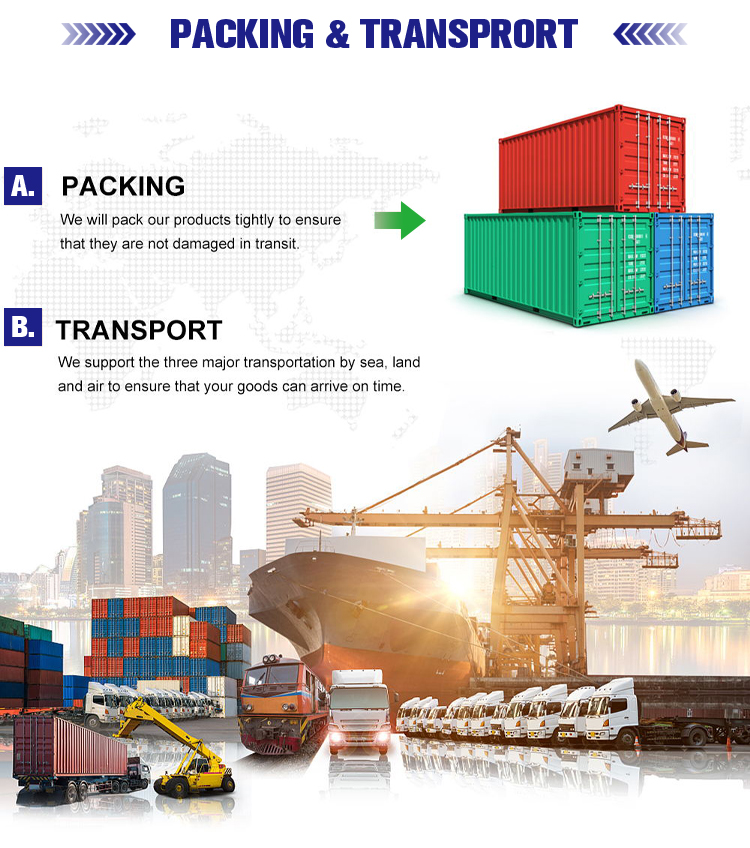

Applications of EV Charger Level 1
It is appplicable for all kinds of charing protocols, Suitable for all kinds of new energy vehicles on the market,Applicable to a variety of electric vehicles, electric buses,Forklift,golf cartsightseeing cartractor, etc.
| CHAdeMO | Nissan leaf&NV200, KIA soul, CITRONEN C-Zero%Bendingo, Peu geot On, Mitsubishi l-Mev&outlander, Geely TX electric Taxi,Zero Motorcycles, Tesla Mode S(need adapter) |
| CCS | BMW i3,VW e-golf&e-up, Jaguar ipace, Tesla model 3, Hyundai ioniq&kona, Audi e-tron, OPEL ampere e, Chevrolet spark, Geely TX electric Taxi,Ford focus, Renault new Zoe |
| GB/T | BYD, BAIC,Chery, Geely, Aion S, MG, Xiao Peng, JAC, Zotype etc. |
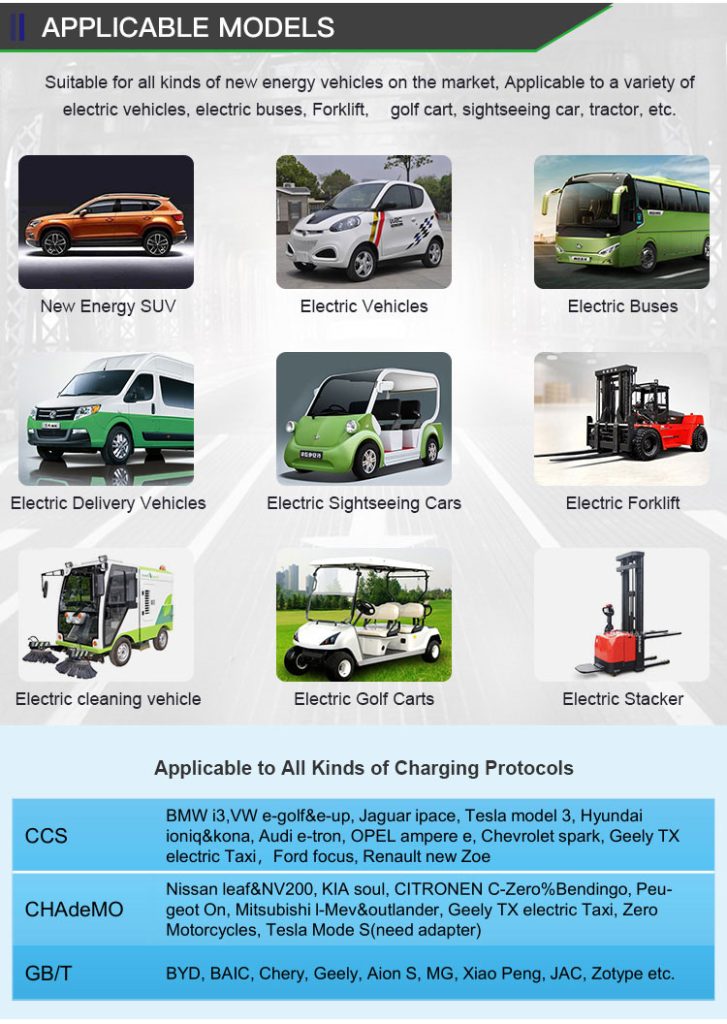
Contact Us
Frequently Asked Questions (Click for More FAQ)
-
Are you a factory or trading company?
We are a professional manufacturer of new and sustainable energy applications for over 20 years.
-
What is the warranty?
Warranty period is 12 months. In this period, we will supply technical support and replace the new parts by free,customers are in charge of delivery.
-
What is the packing method?
Generally, we pack our goods in brown cartons. If you have legally registered patent, we can pack the goods in your branded boxes after getting your authorization letters.
-
What is your terms of payment?
T/T 50% as deposit, and 50% before delivery. We’ll show you the photos of the products and packages before you pay the balance.
-
What is your terms of trade?
EXW, FOB, CFR, CIF, DAP,DDU,DDP
-
How about your delivery time?
Generally, it will take 3 to 7 working days after receiving your advance payment. The specific delivery time depends on the items and the quantity of your order.
-
Can you produce according to the samples?
Yes, we can produce by your samples or technical drawings. We can build the molds and fixtures.
-
What is your sample policy?
We can supply the sample if we have ready parts in stock, but the customers have to pay the sample cost and the courier cost.
-
Do you test all your goods before delivery?
Yes, we have 100% test before delivery.
-
What’s the difference between Movable Charger and Wallbox Charger?
In addition to the obvious appearance difference, the main protection level is different: wallbox charger protection level is IP54, available outdoors;And the Movable Charger protection level is IP43, rainy days and other weather can not be used outdoors.


